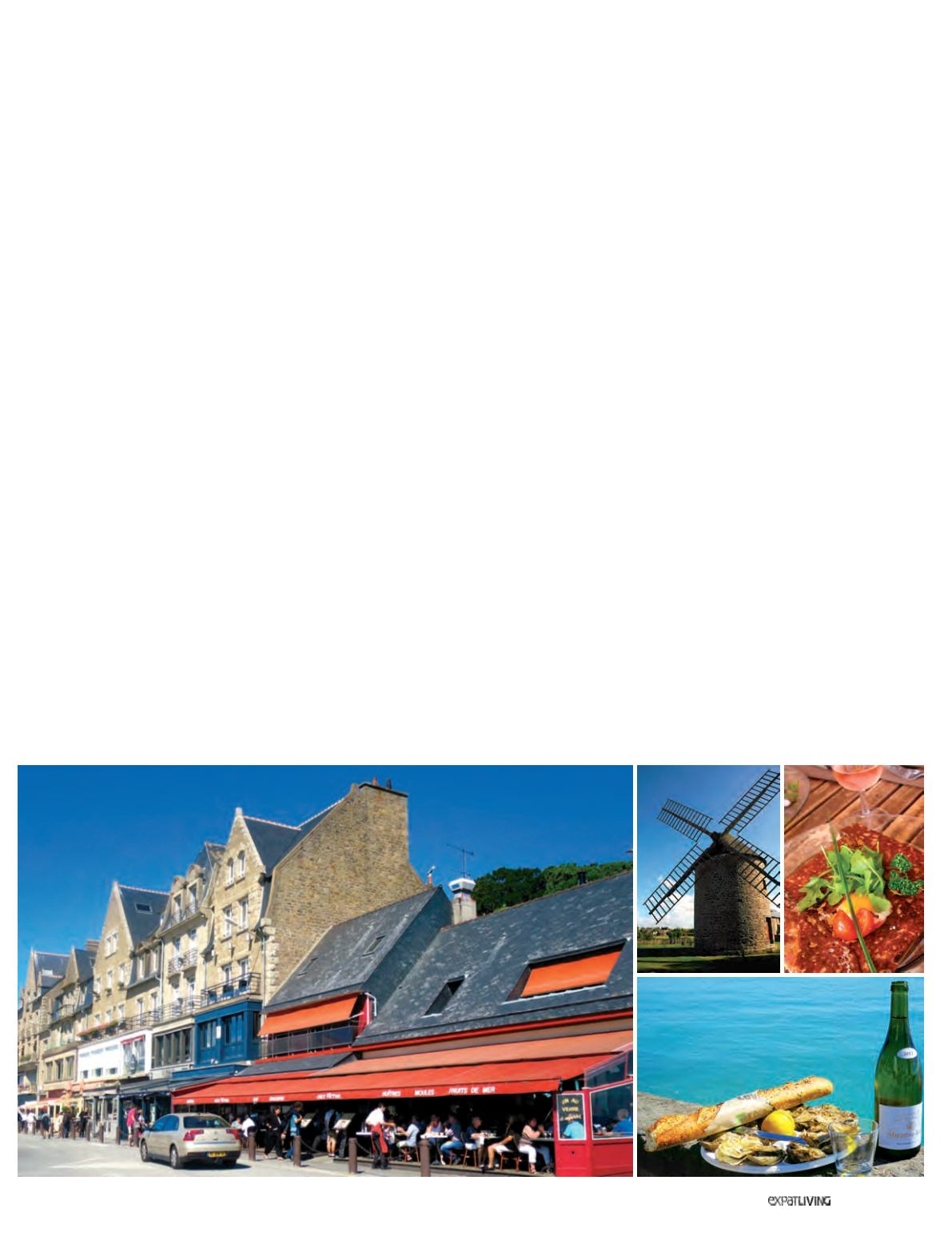

BRETON CUISINE
241
November14
We’re sitting on the low harbour wall at Cancales, slurping
just-shucked oysters from the small cluster of market stalls
nearby, and dropping the shells into the clear shallows,
where shoals of tiny fish await the pickings.
T
hisisBrittany’sCôteD’Émaraude,
or EmeraldCoast, named for the
greeny-blue of the sea. All the
oyster vendor gives you is your
platter of chosen bivalve molluscs, a
plastic knife and a freshly halved lemon.
You could do as we did one blue-sky
day in early September: bring along your
own Tabasco and black pepper, a crisp
baguette and some chilled white wine.
Or not even bother. With or without the
frills, this is a foodie moment – far more
memorable than lunching tamely at one
of the stretch of admittedly attractive
cafés and restaurants that stretch along
the sunny promenade (pictured below).
Best of
By Verne Maree
Brittany (or Bretagne) is a cultural
region in the northwest of France.
Picturesque Cancales is situated on
Brittany’s Baie de Mont Saint-Michel, a
wide and shallow curve of a bay that’s
dedicated to the cultivation of
mussels
and oysters
so good that they’ve
earned appellation
d’origine contrôlée
(AOC) status.
Due to extraordinary tidal differences
of up to 15 metres – only Canada’s Bay
of Fundy has the same – the bay offers
a huge acreage for this
mytiliculture
.
And harvesting is easily done when
the tide recedes twice daily to expose
the thousands of rows of mussel-
encrusted posts (called
bouchots
) on
which they grow.
Brittany is known for
seafood in
general
. From the humble whelk
through to the popular sea bass (or
bar) – often served on a stew of local
vegetables and sundried tomatoes
– and the luxurious lobster, it’s all
immaculately fresh, wherever you go.
Ancient windmills dot the Breton
landscape. Once, they served to grind
the
blé noir
(or black wheat) that’s
still used in the making of another
culinary staple of the region – the
savoury pancakes known as
galettes
de sarrasin
(
pictured below
).



















